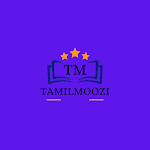Introduction
India experienced an early development of cultures and civilisations. Since the Old Stone Age, several groups in India had migrated multiple times and made cultural adaptations to diverse eco-zones. Each group evolved its own culture responding to their living experiences in each place, which eventually led to pluralistic
beliefs and systems. From a life of foraging through nomadic pastoralism, the settlers in Indus region reached a matured stage of living in the Bronze Age.
This chapter focuses on the history of India from the first settlement of humans in the Stone Age, up to the decline of the Indus Civilisation.It dwells on the Neolithic cultures as well.
Sources
Archaeological sources form the bedrock of information for us to understand this long span of time in Indian history. They include archaeological sites, geological sediments, animal bones and fossils, stone tools, bone tools, rock paintings and artefacts. There is no written evidence for this period. Although the Harappans used a script, it is yet to be deciphered.The faunal (animal) and floral (plant)
sources are important for understanding the relationship of the Stone Age people with their environment. Floral evidence found in the form
of charred seeds, pollens and phytoliths (plantstones) helps us to gain knowledge of farming practiced by Stone Age people.The human genes also constitute animportant source for understanding pre-historic migrations. The mitochondrial DNA(mt-DNA) studies provide information on pre-historic migrations. Scientists are trying to extract ancient DNA from the bones of the pre- historic era to understand human dispersals.Language is another important source of history. Indo-Aryan, Dravidian, Austro-Asiatic and Tibeto-Burman language families have flourished in India. These languages developed and evolved during the various phases ofmigrations in Indian history.
the pre-history of India was considered to havebegun within the time span of one million yearsago. But, recent investigations have producedevidence for the presence of human ancestorsin India between two million and one million
years ago.Generally, the period before the inventionof script is broadly divided into Stone Age,Bronze Age and Iron Age. Hence, the names ofgrey ware culture or Iron Age culture) or thegeographical region (Indus) or the first siteto be identified (for example, Acheulian orHarappan) are used to name the cultures.
Middle Palaeolithic Culture
After about 4,00,000 years BP (BeforePresent), changes took place in the lithic
technology and the species of human ancestors diverged. The species of Homo erectus existed in this period. Some of the Middle Palaeolithic
tools are attributed to behavioural modernity. Anatomically modern humans are said to have emerged around 3,00,000 years ago. In India, the Middle Palaeolithic phase was first identified by H.D. Sankalia on the Pravara River at Nevasa. After this discovery, several sites of this period have been identified. Recently, the
Middle Palaeolithic of Athirampakkam is dated to be around 3.85-1.72 lakh years BP. Indian Middle Palaeolithics probably may be as old asthe African Middle Palaeolithic culture.
Economy
Hunting wild animals and gathering plantfood and fishing were people’s main occupationduring this age. Agriculture was not practised
in the early stages. At the end of the Mesolithicperiod, humans domesticated animals andpaved the way for the Neolithic way of life. The
rock paintings of Central India depict hunting,trapping, fishing and plant food collection.The faunal evidence from this period shows
that people belonging to this period huntedcattle, gaur,buffalo,barasingha, porcupines,sambar, chital, gazelle, hog deer, nilgai, jackal,turtle, fish, wild hare, lizard fox and monito lizard. Bones of rhinoceros and elephant have
also been found. They used spears, bow and arrow and traps. The paintings of Bhimbetka show that various animals were hunted and for
this men and women went together.The people used fire and perhaps roasted food. Domestic animal bones of cattle, sheep, goats, pig and dog have been found at Kanewal, Loteshwar and Ratanpur, and from Adamgarh and Bhimbetka in Madhya Pradesh sites. Camel
bones have been found from Kanewal.
Camps and Houses
The Mesolithic people were highly mobile.They moved in search of animals and plant foods.They made temporary huts and also used caves
and rock shelters. Circular huts with postholes and burnt clay lumps bearing reed impressions have been found. Many of caves and shelters
feature paintings. Circular huts are seen in rock paintings. The temporary huts were built using perishable materials. Traces of oval and circular
huts and possible wattle daub are found in Chopani Mando and Damdama in Uttar Pradesh and Bagor and Tilwara in Rajasthan.






0 கருத்துகள்